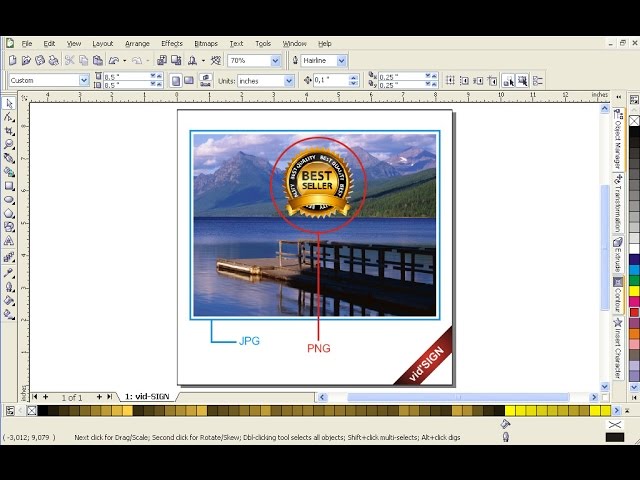Mastering the Art of Image Manipulation: A Comprehensive Guide on Importing RAW Camera Files in CorelDRAW

Introduction:
In the ever-evolving landscape of graphic design, CorelDRAW has established itself as a powerhouse, offering an extensive array of tools and features to bring creative visions to life. Among its many capabilities, the ability to import RAW camera files stands out as a game-changer. This article delves into the nuances of importing RAW files in CorelDRAW, unraveling the potential it holds for designers seeking the highest quality and control over their digital imagery.
Understanding RAW Files:
RAW files, often likened to digital negatives, represent the unprocessed and uncompressed data captured by a digital camera’s sensor. These files encapsulate a wealth of information, preserving details in shadows, highlights, and color nuances that might be lost in compressed formats like JPEG. CorelDRAW’s support for RAW files opens up a world of possibilities for designers who prioritize unbridled creative control and uncompromised image quality.
Importing RAW Files into CorelDRAW:
CorelDRAW streamlines the process of importing RAW files, offering designers a seamless transition from camera to canvas. To initiate this transformative journey, users can navigate to the “File” menu, select “Import,” and opt for the RAW file they wish to incorporate into their project. CorelDRAW boasts compatibility with a diverse range of camera RAW formats, ensuring accessibility for users with different camera models.
The Advantages of Importing RAW Files:
- Preservation of Image Quality: The primary advantage of importing RAW files into CorelDRAW lies in the preservation of image quality. Unlike other formats that apply compression algorithms, RAW files maintain the full spectrum of data captured by the camera’s sensor, allowing designers to work with images in their purest form.
- Extended Dynamic Range: RAW files exhibit an extended dynamic range, enabling designers to recover details from both overexposed and underexposed areas. CorelDRAW’s tools empower users to manipulate this expanded range, providing greater flexibility in achieving a balanced and visually appealing composition.
- Color Accuracy and Customization: CorelDRAW’s support for RAW files facilitates accurate color representation, allowing designers to fine-tune and customize colors with precision. The ability to set custom white balance during the import process ensures that the colors in the final design closely match the photographer’s intent.
- Non-Destructive Editing: Working with RAW files in CorelDRAW follows a non-destructive editing workflow. Designers can make adjustments to exposure, contrast, and other parameters without altering the original RAW data permanently. This flexibility is crucial for iterative refinement and experimentation.
- Flexibility in Output Options: Importing RAW files into CorelDRAW doesn’t restrict designers in terms of output options. Whether creating designs for web, print, or multimedia, the flexibility remains intact, allowing users to export their projects in various formats without compromising quality.
Optimizing the RAW Workflow in CorelDRAW:
- Organize Your Workspace: To enhance workflow efficiency, organize your workspace by establishing a systematic process for importing, editing, and exporting RAW files. CorelDRAW’s layer and grouping features can aid in maintaining a well-structured project.
- Experiment with CorelDRAW Tools: Delve into CorelDRAW’s extensive toolkit, experimenting with features like the Histogram, Tone Curve, and Color Balance to understand their impact on RAW files. Each tool contributes to the enhancement of image quality and creative expression.
- Utilize Adjustment Layers: Leverage the power of adjustment layers in CorelDRAW for non-destructive edits. This approach allows designers to experiment with changes while preserving the original RAW data, fostering a risk-free creative exploration.
- Explore Filters and Effects: CorelDRAW offers an array of filters and effects that can be applied to RAW files. Experimenting with these features can yield unique and visually striking results, adding an extra layer of creativity to your designs.
Conclusion:
In conclusion, the integration of RAW file support in CorelDRAW extends an invitation to designers to explore the full potential of their camera’s capabilities. The importation of RAW files heralds a new era of image manipulation, where creative freedom meets unparalleled image quality. By mastering the art of importing RAW camera files in CorelDRAW, designers can elevate their projects to new heights, crafting visuals that captivate and resonate with audiences across various mediums. Embrace the richness of RAW, and let your designs unfold in the vibrant canvas of CorelDRAW.







